By Ulysses Jackson and Jim Hayes
Iron oxide pigments come from a variety of sources, both naturally occurring and man-made. The beauty of synthetic manufacturing is the ability to make very bright, strong tint, opaque and consistent earth tone colors. What may be lost with these man-made pigments is the ability to create translucent and softer effects.
This is where naturally occurring iron oxide pigments have value; as they are inherently more translucent yet offer some warm, rich qualities. The very quality of being naturally occurring means these pigments are variable in composition and physical properties, which can result in color variance from one pigment lot to the next. While this natural modulation is of great allure to artists, natural variability can cause paint makers some concern. Golden Artist Colors works hard to maintain tight tolerances on all of its products, yet the very nature of these pigments creates a need for some reasonable tolerance to variation.
That said, oil painters have access to a wide range of Natural Earth Colors. Yet, until this range of Natural Earth Colors, the acrylic artist has been limited to the standard iron/ferric oxide pigments. GOLDEN is proud to be on the forefront of Acrylic research in making available a massive resource of tone to the artist community. GOLDEN Natural Earth Colors allows for a rich impasto effect in a flexible film, and blends of these colors allow for an almost infinite variation of subtleties to render the natural world.
GOLDEN Natural Earth Colors are so diverse in tone and subtleties it would take a substantial article to describe each color fully. Thus, for the sake of brevity GOLDEN Natural Earth Colors can be placed into the following color groups. Under each heading below is a simplified description of each color’s space.
Red Earths
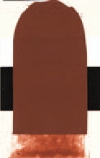
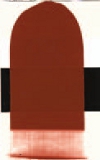
Natural Red Iron Oxide, PR 102, is a ferric oxide, which has a color somewhere between Red Oxide and Violet Oxide but trending on the redder side, with a bright earthy pink tint.
Natural Venetian Red, PR 102, is a ferric oxide with more transparent characteristics than GOLDEN Red Oxide. Its color is lower in chroma than a synthetic, but still retains a lush red tone.
Orange Earths
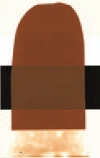
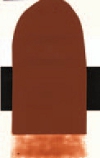

Orange Ochre, PY 43, is a hydrated Iron Oxide that is clean in tone for an earth color. The color can be described as a transparent bright rich orange with a slightly brown-yellow undertone, which tints peach to red-orange.
Red Ochre, PR 102, is a ferric oxide pigment that is a lighter, opaque red ochre. It fills the color space between Burnt Sienna and Mars Yellow and tints to a light pink tone.
Ochre Havane, PY 43, is a hydrated ferric oxide that is beautifully translucent and tints whites a light orange. It fills a color space between two synthetic pigments: Transparent Yellow Iron Oxide and Mars Yellow.
Yellow Earths
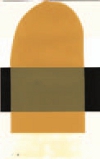

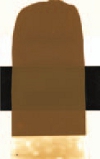
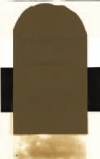
Natural Yellow Iron Oxide is a bright transparent earth yellow with an amazing “amber” luminosity.
Yellow Ochre (Red Shade), PY 43, is very similar to Yellow Ochre with a gentle red shade in its masstone. It
has a tint with pink-peach qualities.
Raw Umber Olive, PBr 7, is a ferric oxide with a higher chroma yellow-green Raw Umber. Its tint strength is slightly weaker than Raw Umber, but creates tints of a pure yellow grey tone.
French Raw Sienna, PBr 7, is a very interesting ferric oxide that is much more orange and translucent than Transparent Yellow Iron Oxide.
Olive Earths
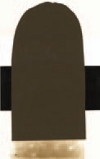
Raw Umber Olive Light, PBr 7, is a ferric oxide with an amazing olive earth yellow-green tone, almost as if Nickel Azo Yellow, Yellow Oxide and Burnt Sienna were mixed together. This color creates tints of a yellow grey quality and fills a new color space.
Brown Earths

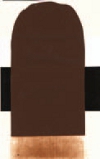
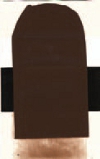
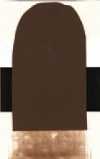
French Burnt Sienna, PBr 7, is a ferric oxide that is a more translucent version of Burnt Sienna.
Raw Umber Cyprus, PBr 7, is a ferric oxide that fills the color space between Burnt Sienna and Burnt Umber Light. This versatile brown creates tints that are orange-pink in nature.
French Burnt Umber, PBr 7, is a ferric oxide, which manifests a lighter purple biased version of Burnt Umber. It tints similar to a weak Violet Oxide.
Raw Umber Chestnut, PBr 7, is a ferric oxide that fills the color space between Burnt Umber Light and Raw Umber. It is a light, rich color with a tint closer to Burnt Umber Light.
Grey Earth and Black Earth
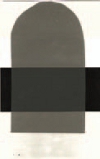
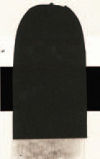
Ardoise Gray is transparent grey slate with a mild blue undertone. It can be useful in grey glazes bringing greater depth to shadows.
Cassel Earth is a warm black with orange-red undertones. It tints with a red-purple quality. The overall aesthetic is one of a genuine Asphaltum, but in a lightfast earth color.
About Ulysses Jackson
View all posts by Ulysses Jackson -->Subscribe
Subscribe to the newsletter today!
No related Post

That is not Cassel earth — I have used it before by Maimeri Classico and it is far deeper and darker than this fake sample
Hi Carlos –
Actually the Cassel Earth highlighted in this article is a genuine natural bituminous earth, NBr 8, that is imported from France. It also happens to be the same pigment found in our French Cassel Earth in our line of Williamsburg Handmade Oil Colors, where we also have a genuine Van Dyke Brown made from a different source of this rare pigment. Unfortunately most companies use a blend of other pigments to simulate this color, and therby losing much of its subtleties, and that might be some of the difference you are noticing. For example, Maimeri Classico is a blend of PBk9 Bone Black, PBk7 Carbon Black, and PBr7 Calcined Natural Earth, while Maimeri Puro’s Van Dyke Brown is a simpler blend of PBk9 Bone Black, PBr7 Calcined Natural Earth. In fact we are one of the few remaining companies to still make this from a genuine historical pigment, which we are very proud of. Lastly, we would also want to note that genuine Cassel Earth in acrylics will appear lighter and more translucent than in our Williamsburg Oil Colors line due to the inherent difference in pigment loading between acrylics and oils.
We hope that helps provide you with information about the difference in appearance between genuine Cassel Earth versus blends you might find elsewhere. If you have any other questions always feel free to ask.
Whenever shopping for a Van Dyke Brown, I always make sure it contains authentic Cassel Earth. Theres no substitute for that sticky grungy effect in glazes. One of my magic secrets.
Great new look and features for the Just Paint archive.
=)
We love the real stuff too! Although we also want to be upfront that, while we have tested both our Cassel Earth and genuine Van Dyke Brown sources for lightfastenss to make sure they do well, it is a pigment with a mixed reputation, and of course using it in very thin glazes will make it more vulnerable to fading. So always make sure to ask about the lightfastness testing it has gone through when buying it.
And thanks for the warm feedback on the new look and features! We love it too.
I like the look of these, but I see they are not for sale in the regular lines. How do I get ahold of these?
Thank you for your question, Leslie.
These experimental Heavy Body Acrylic paints were created back in 2007, shortly after we acquired Williamsburg Oils. Williamsburg Handmade Oil Colors. If there are specific ones listed in this article that you were interested in, please let us know. There are some very beautiful natural earth colors but unfortunately the interest level was not there for the majority of colors.
– Mike Townsend